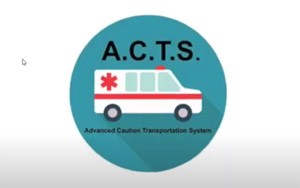Gateway Technical College students took home honors again at the American Technical Education Association 3D Futures Competition, an event that challenges students to use digital tools to modify or address a team-designed problem.
Gateway students Kylee Thompson (Burlington), Cassidy Baran (Mount Pleasant) and Carson Hebior (Trevor) took home second place and a $1,000 cash prize in the national competition, while Esmeralda Castaneda (Darien), Chase Rubin (Long Grove) and Vianney Perez (Delavan) took home third and $500.
Gateway Architectural-Structural Engineering instructor Robert Kaebisch, who leads the effort to advise and encourage students with their projects, said the competition helps to teach students how to work as a team, make decisions quickly and within a relatively short time frame and to think outside the box to problem solve.
“They can take this as far as they like,” said Kaebisch. “The contest is pretty open-ended, students need to identify a problem and show how digital technology can solve the problem. They have to manage a timeline, set realistic goals, project manage, divide the work and produce a video. All the teams did a great job, they had a lot of innovative ideas.
“This is also a real fun experience for the students. The skills they learned through this can be applied to other classes, too, and in their career.”
Gateway fielded three teams for the event.
The second-place team focused on producing a device for vehicles that will allow a “head’s-up” screen display to warn the driver that an emergency vehicle is approaching. It would also be able to interact with a vehicle’s GPS navigation system to show them exactly where the emergency vehicle is in relation to their vehicle.
The video created for the second place team can be found here: https://bit.ly/GTCFutures1
The third-place team focused on producing a device that would help put on and remove a prosthetic leg unit for patients. The team said their research indicated many people choose a wheelchair over a prosthetic leg because of the steps needed to put it on. They would use 3-D scanning and manufacturing to help produce a quality tailored prosthetic that is leg easily attachable and removable for a patient.
The video created for the third place team can be found here: https://bit.ly/GTCFutures2


